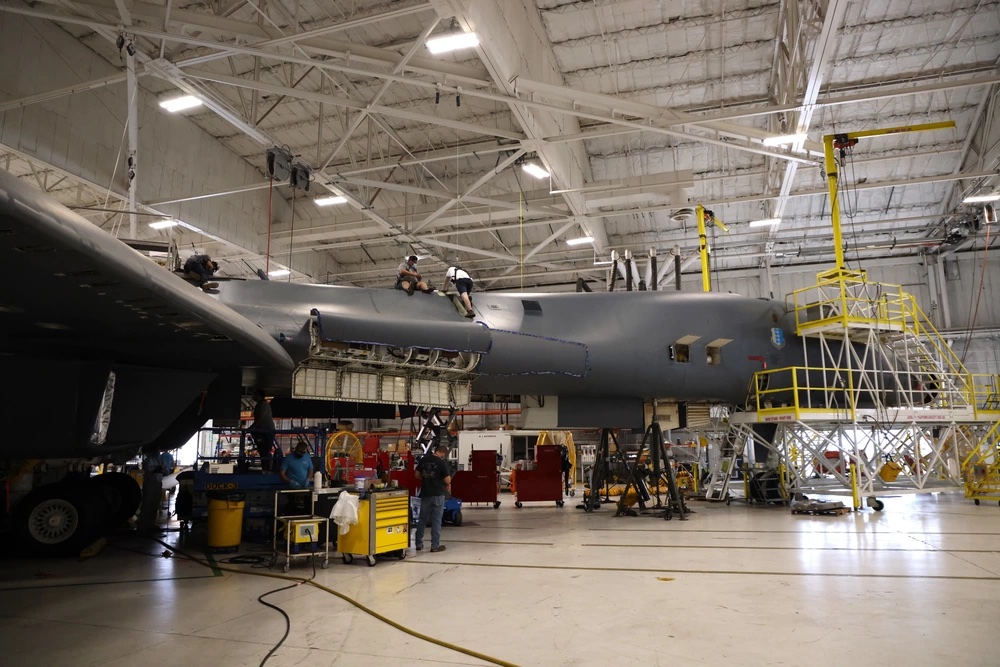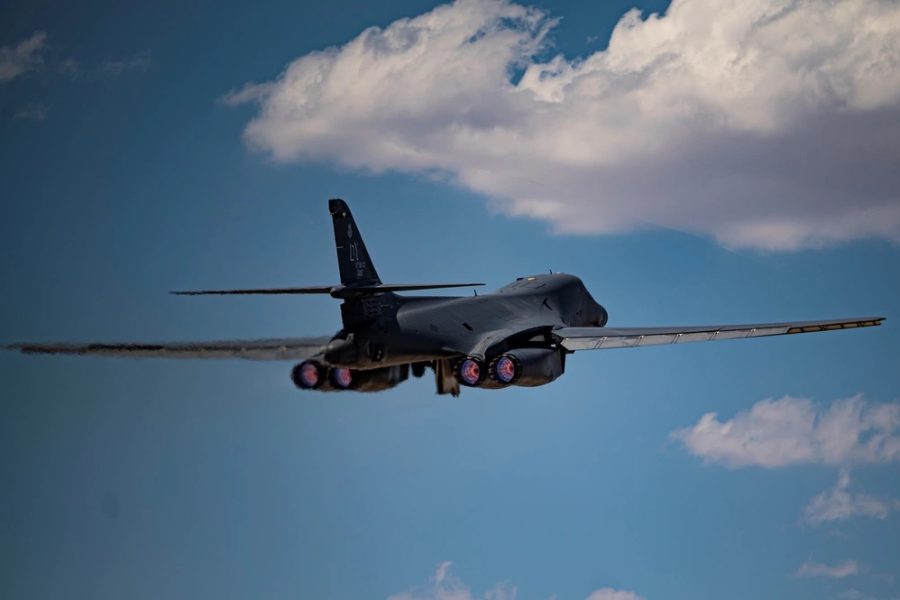The 7th Bomb Wing at Dyess Air Force Base, Texas, launched a B-1B Lancer on Sept. 8 that received a slew of technology upgrades through a new program designed to modernize the aging bomber fleet much faster than usual.
Aboard the B-1 was a modernized Identification Friend or Foe system, Link 16 tactical data communications capability, upgraded secure communications systems, an updated defensive avionics system, and updated mass data storage to handle the large amounts of information flowing through modern battlefields, according to a press release published Oct. 4.
The upgrades are part of the B-1 Embracing Agile Scheduling Team (BEAST) program, which Col. Dan Alford, commander of the 7th Operations Group, said should make the aircrew’s job a little easier.
“BEAST significantly enhances the lethality of the B-1B, surpassing its current capabilities,” he said in the release. “Our aircrew are excited to get their hands on this new technology that will reduce their workload and allow them to focus on combat employment of the weapon system itself.”
Under BEAST, technicians at Dyess work with a contract field team hired specifically to perform the modification. The program also involves Air Force Global Strike Command and the 76th Aircraft Maintenance Group at Tinker Air Force Base, Okla., where B-1s receive depot-level maintenance. It is intended to get new systems into the field faster.
“BEAST packages several different upgrades together in a software suite, streamlining the upgrade process and better equipping the team to meet the demanding operational tempo,” Col. Joshua Pope, commander of the 7th Maintenance Group at Dyess, told Air & Space Forces Magazine.

BEAST shaves two years off the upgrade process, Pope said. Specifically, the upgrades take an average of 22 days to complete, he said. Over the next two years, 22 more B-1s at Dyess will be modernized one at a time.
“This method allows for the shortest completion time while giving each bomb wing flexibility to schedule their aircraft for modification according to their aircraft availability requirements,” Pope said in the press release. “It is the best for all organizations and ensures the B-1B is ready to fight from here.”
The upgrades at Dyess are one of several efforts to keep the B-1 flying until the stealthy B-21 Raider, which is yet to take its first test flight, comes online. The Air Force Life Cycle Management Center has a multi-pronged approach that includes investing in spare parts manufacturers and studying whether the bomber can be used as a test platform for hypersonic weapons.
AFLMC is also working around measures that were taken to render the B-1’s external hardpoints inoperative under the START treaty, which precluded the B-1 from carrying nuclear weapons like the AGM-86B Air-Launched Cruise Missile externally.
Beyond new weapons, a B-1 fuselage and wing are also undergoing full-scale structural fatigue testing at manufacturer Boeing’s facility in Washington state to identify potential risk areas. The Air Force is creating digital twins of the bomber, which should help predict structural issues and serve as a baseline for upgrades.
“We’re keeping the fleet safe until the B-21 shows up,” Brig. Gen. William Rogers, program executive officer for bombers at AFLCMC, told reporters in July. “… We can keep that plane flying. It is just hard work.”
Meanwhile, the BEAST modifications should give the B-1 “life and lethality out to 2040 and beyond,” Pope said.

